Female students visit the High-Flux Solar Furnace in Cologne on Girls'Day
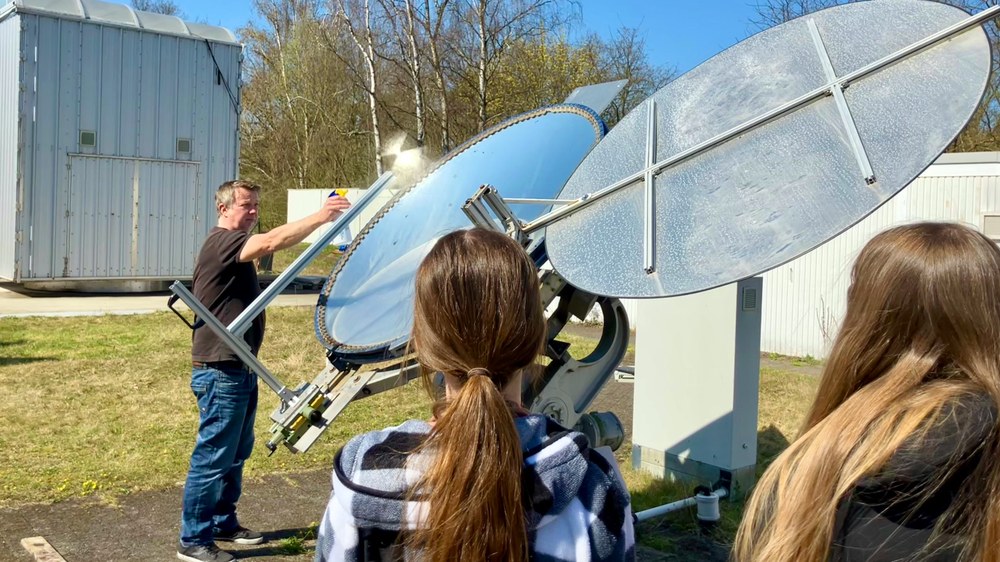
- Six schoolgirls visited the High-Flux Solar Furnace at the DLR site in Cologne-Porz as part of Girls'Day.
- They conducted various experiments that would help them learn how to concentrate the sun's energy and use it sustainably.
- The aim of the “Girls'Day” initiative is to get young women interested in science and the natural and engineering sciences, mathematics and technology.
The things the sun can do – that's what impressed six schoolgirls during their visit to the High-Flux Solar Furnace at the DLR site in Cologne-Porz on Girls'Day. From small to large scales, they experienced through experiments how the power of the sun can be multiplied.
Starting with a magnifying glass – “I'm sure all of you have tried this before, haven't you?” – DLR scientist Christian begins the experiment. “The spot has to be as small as possible,” he explains, while he points the magnifying glass at the sun and lets the focal point fall on a cardboard box. The cardboard box quickly starts to smoke. What remains is a small dark spot. “That was fast,” is the reaction of the young female visitors.
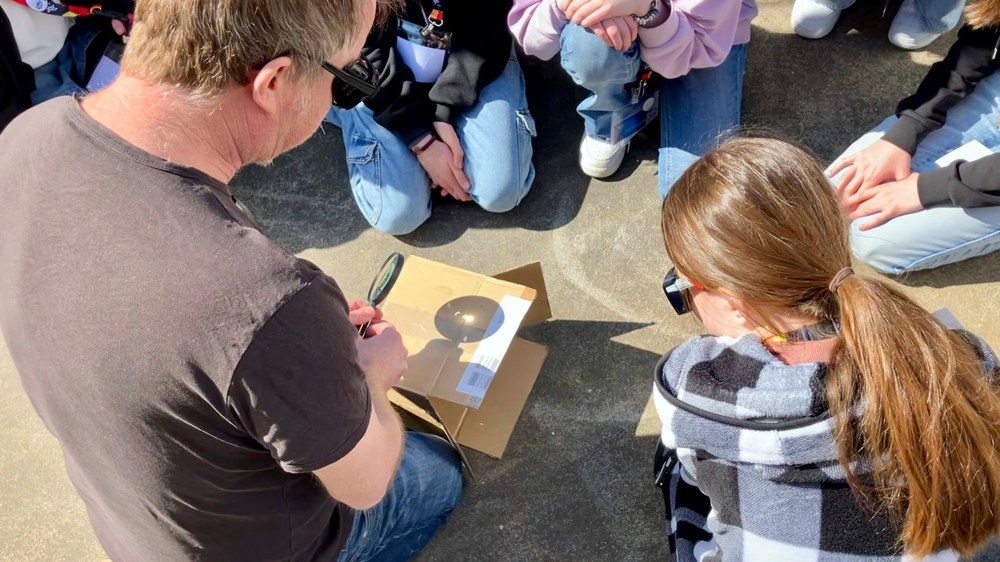
Equipped with protective goggles, they observe first and then get to try it out themselves. The reflection of the sun on the paper is concentrated 50 to 1,000 times depending on the magnifying glass. So it gets very hot. Depending on the type of paper, it starts to burn at around 180 to 360 degrees Celsius. Christian holds his hand between the magnifying glass and the paper – pretty brave? He explains that the closer he holds his hand to the magnifying glass, the larger the focal point is, and the heat is distributed over a larger area. The further he holds his hand towards the cardboard box, the smaller the focal point becomes – “and it also gets warmer and warmer,” he reports. In this case, he has used his hand as a “shutter.” Such covers are also used in science. The students see this at the next station.
Stainless steel blown with solar power
A large mirror is located on the premises at the High-Flux Solar Furnace, which is covered by a metal disc, a so-called disc mirror. It automatically points towards the sun, a computer program tells the mirror how to move. When the shutter is pushed aside, the solar radiation is reflected. But where is the focal point now? Christian fetches a spray bottle of water to help. As he sprays, light reflections appear in the water mist and suddenly the students can clearly see a cone – the focal point.
“Do you think we can use it to light wood?” Christian asks the group. Skeptical looks are the answer. So it is tried out. It doesn't take long before the piece of wood starts to smoke, and a few seconds later, flames can be seen.
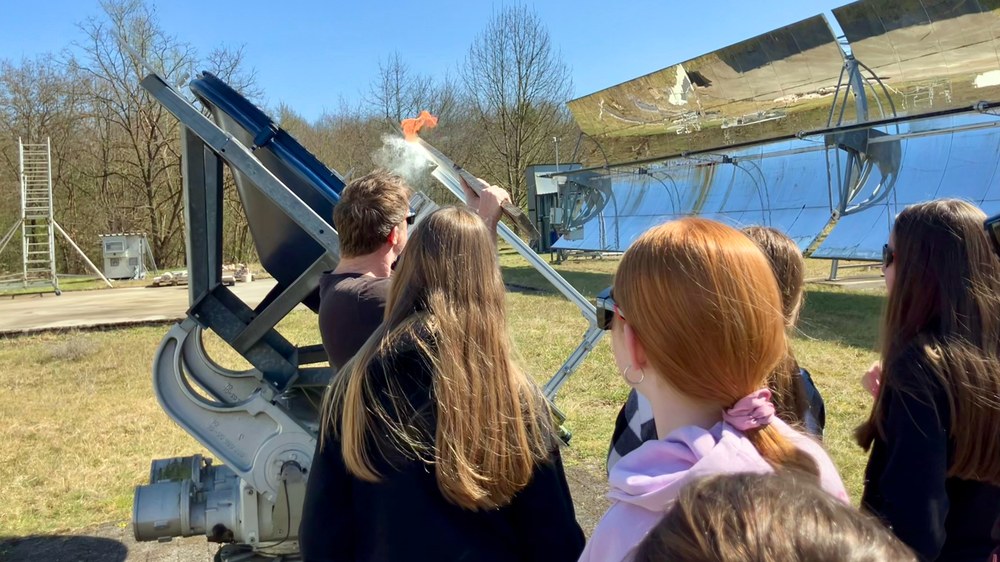
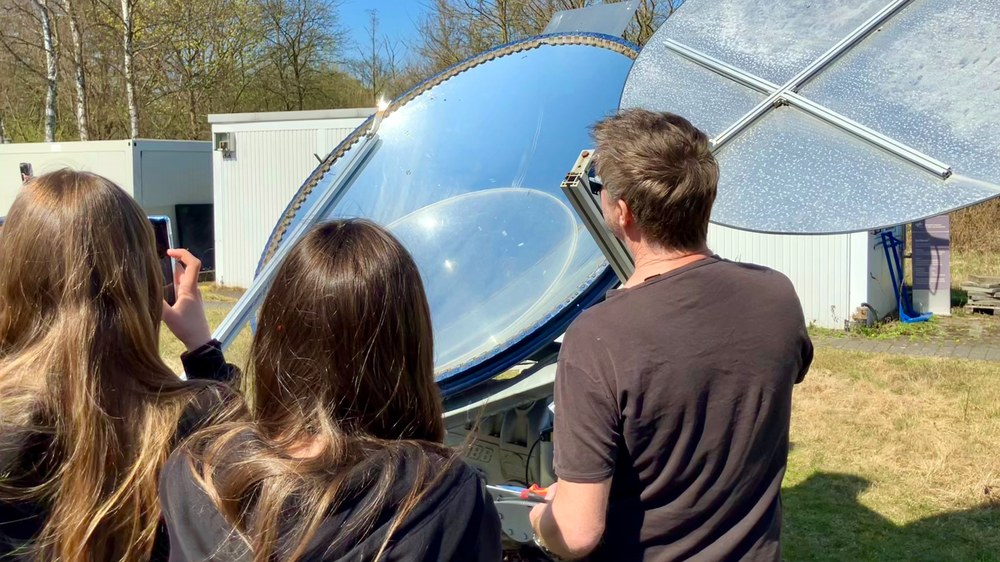
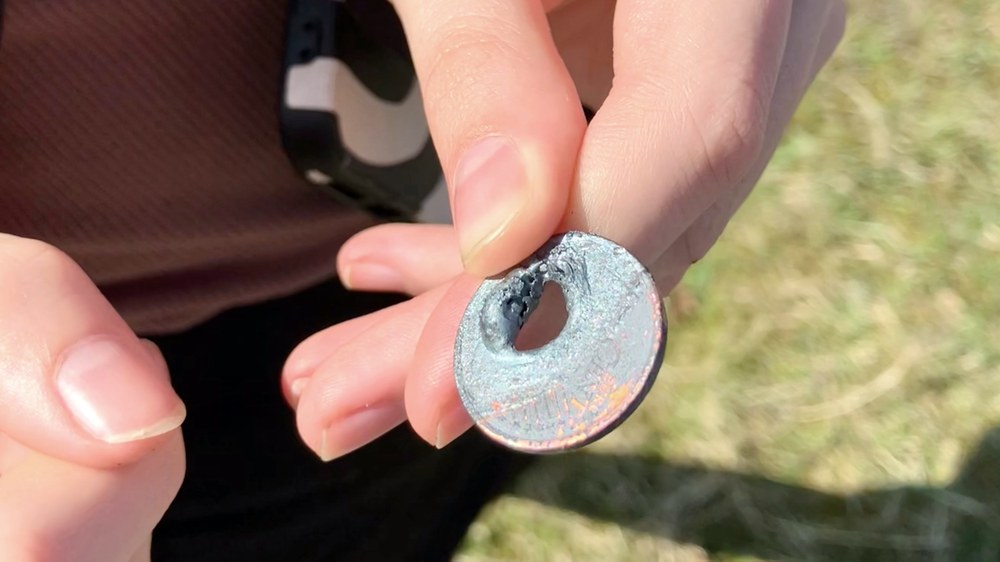
“And what about metal?” Christian asks next. The young visitors are now quite enthusiastic: “Of course,” “definitely,” they say. To test this, Christian hands each of them a 5-cent piece. Stainless steel melts at around 1,200 degrees Celsius, he explains. This mirror concentrates the sun 10,000 times. “Let's see if we can get through it.”
They put a 5-cent piece in a device in front of the mirror, open the “shutter” and it gets very bright on the coin. Christian and the experiment participants close the shutter again, let the coin cool briefly and then remove it from the device with pliers – the 5-cent piece has a hole in it. The young scientists are very enthusiastic and pragmatic: “That looks beautiful. I'll make a necklace out of it,” says one student.
Conducting experiments at temperatures of up to 2,500 degrees Celsius
The next stop takes the students to an even larger mirror. It is 57 square meters in size. But where does it direct the solar radiation? Behind a rolling door, 159 smaller hexagonal mirrors are hidden. These are arranged in a honeycomb pattern on a vertical, square surface. “This is the concentrator,” explains Christian. Each mirror directs the solar radiation to a point in the building. Experiments can then be carried out there at a temperature of up to 2,500 degrees Celsius. This is the High-Flux Solar Furnace.
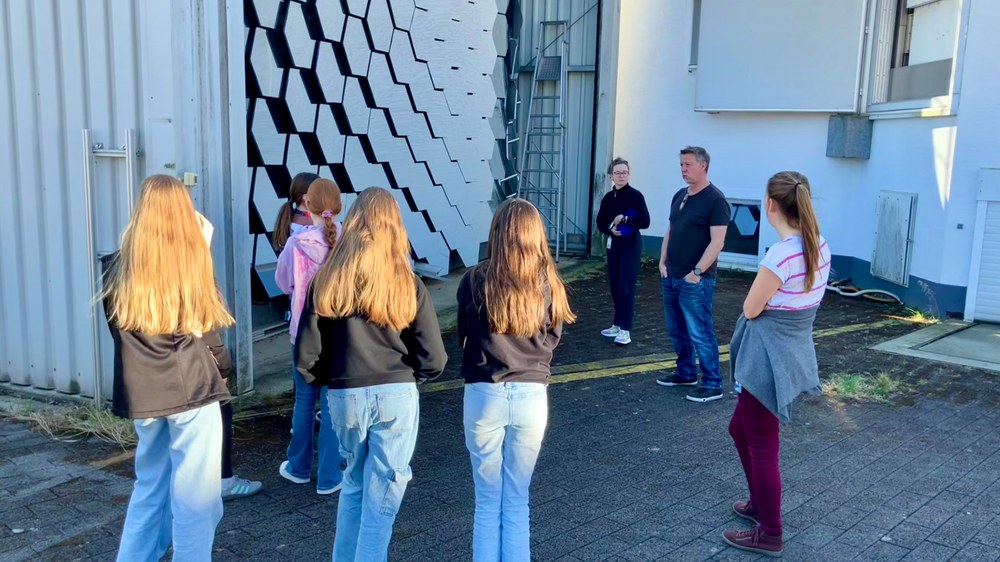
Inside the building, it doesn't look anything like a furnace. The students enter a room with lots of computer screens. This is where scientists can adjust the mirror, close and open the roller shutter in front of the concentrator and move two shutters. These two panels can regulate how much solar radiation enters the experimental room. The students can look into the experimental room through a window and watch the experiments.
Speaking of experiments: Christian takes out a steel plate one centimetre thick. ‘’Can we burn through this?‘’ a student asks directly. Of course, they try it out. To do this, they align the plate so that the focal points land in the middle. All the participants withdraw to the control room, align the mirror and concentrator, open the shutter and it gets light in the experimental room. When they close the shutters again, the steel plate is not yet completely penetrated – but it is conceivable that it would not have taken much more time to do so. A failed experiment, which is part of everyday work in science and provides valuable insights every time.
A village on the moon with the help of solar energy
But what is it all for? All kinds of experiments are carried out here, for example, hydrogen and synthesis gas can be produced using solar energy, explains Christian. These substances can be used as fuels for transport, for example. But one topic particularly interests the students: the village on the moon. The DLR scientist explains that a team at the High-Flux Solar Furnace has developed a 3D printing process that uses solar energy to produce building blocks from moon dust. They have tested this with volcanic dust that is similar to the dust on the moon. So the sun is going to help build buildings on the moon. What the sun is able to do.


The students visited the solar furnace as part of Girls'Day. They spent the morning at DLR School_Lab Cologne, where they were able to conduct experiments with infrared light. Girls'Day is an annual event designed to motivate girls and women to pursue careers in fields such as technology, science and research.
